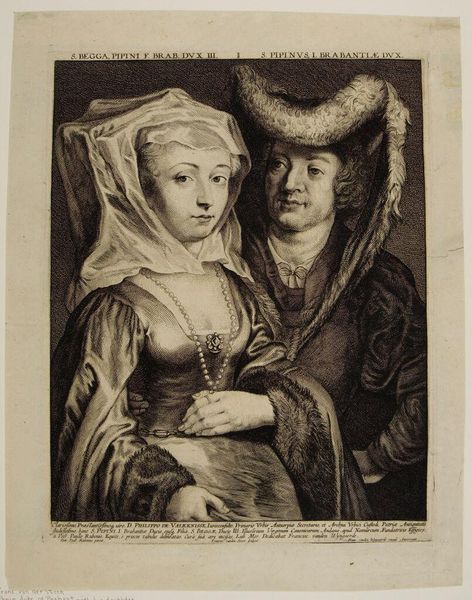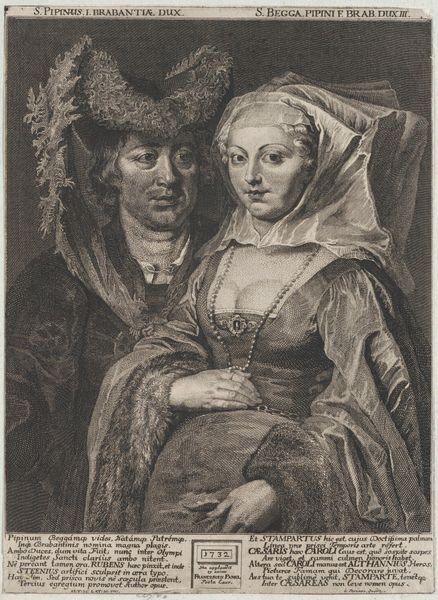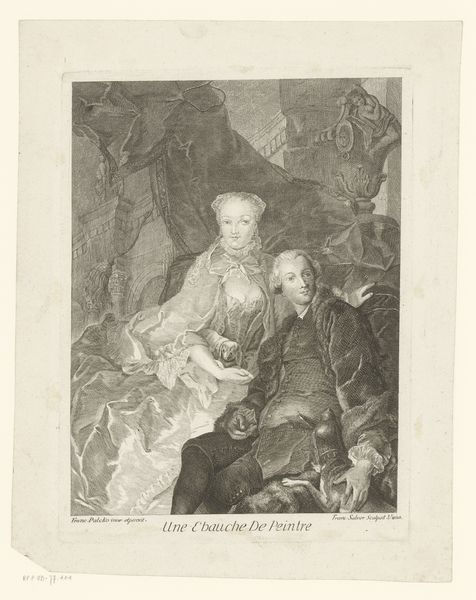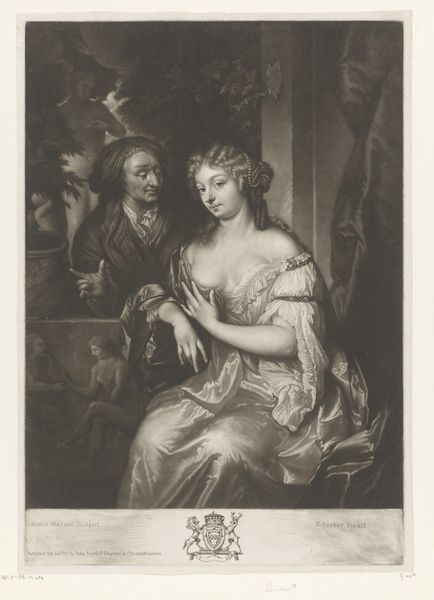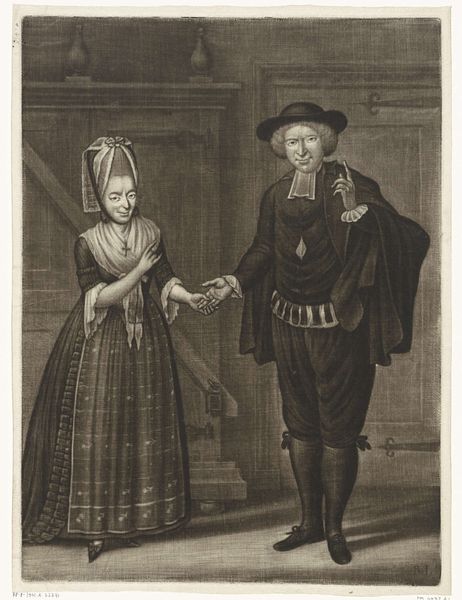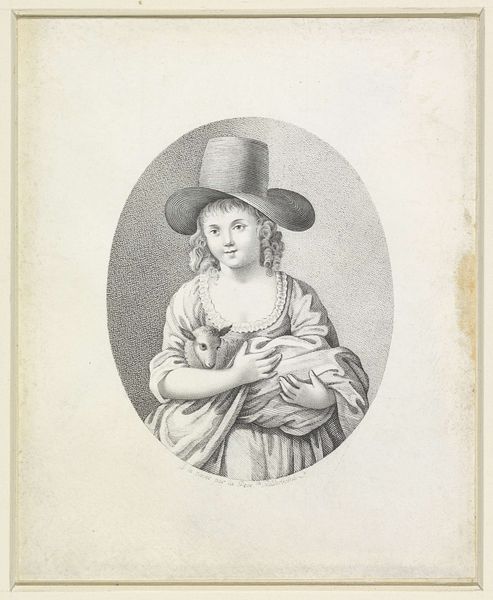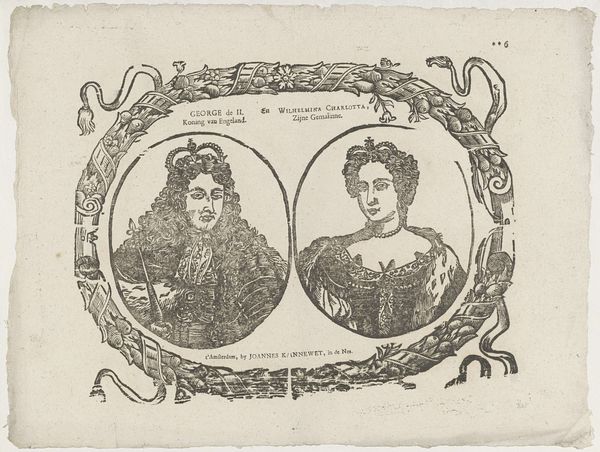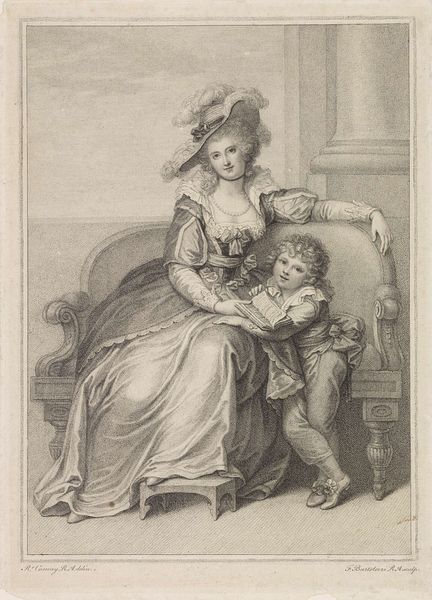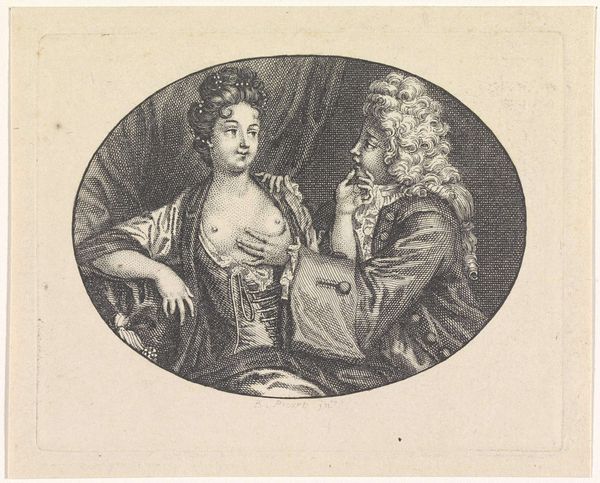
Saint Pepin I and his daughter, Saint Begga 1640 - 1677
0:00
0:00
drawing, print, engraving
#
portrait
#
drawing
#
baroque
# print
#
figuration
#
history-painting
#
engraving
Dimensions: Plate: 13 1/8 × 10 5/16 in. (33.4 × 26.2 cm) Sheet: 15 9/16 × 12 1/16 in. (39.5 × 30.7 cm)
Copyright: Public Domain
Curator: Look at this engraving, "Saint Pepin I and his daughter, Saint Begga" by Franciscus Van Den Steen, dating roughly from 1640 to 1677. What is your first impression? Editor: Striking, particularly the textural contrast. The softness of what appears to be fur against the sleek fabric of the daughter’s dress, all rendered meticulously through engraving. Curator: Indeed. The artist’s technique creates visual hierarchy. Observe how line quality shapes our focus, drawing the eye from the ornate headdress to the subjects' facial features. Editor: For me, though, it speaks to the process. Consider the engraver's painstaking labor involved. Each line is a deliberate mark, etching away at the copper plate—hours and hours dedicated to a historical or religious narrative, perhaps for distribution and widespread consumption. Curator: Precisely! This artwork merges portraiture, a representation of figures, with historical painting to sanctify two early medieval nobles. See how the composition lends dignity and virtue? Editor: But let's not forget the conditions of artistic production. Who commissioned it? Who was it intended for? Knowing this shifts our understanding from a purely aesthetic exercise toward something intertwined with social and economic motivations. I mean, look at that fur—real or depicted—it screams luxury. Curator: Ah, the intersection of aesthetics and cultural history. That focus, for me, is less persuasive than analysis of artistic expression; this rendering achieves a heightened effect of dignity by emphasizing vertical lines and subtle gradations of dark and light, further isolating the faces of each figure to emphasize the divine. Editor: But those aesthetic effects—the verticals, the subtle light—serve those cultural purposes! Highlighting power through visual language—a crucial form of material rhetoric. It really forces us to question the function of art beyond just pure aesthetic enjoyment. Curator: A fruitful perspective, offering new dimensions to the work’s significance. Editor: Absolutely, the dialogue itself between the historical narrative, and the art's cultural meaning opens up this beautiful artifact to contemporary discourse.
Comments
No comments
Be the first to comment and join the conversation on the ultimate creative platform.
